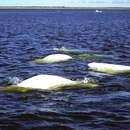Diet
provided by World Register of Marine Species
large variety of fish, various crustaceans and other bottom living invertebrates
North-West Atlantic Ocean species (NWARMS)
- license
- cc-by-4.0
- copyright
- WoRMS Editorial Board
Distribution
provided by World Register of Marine Species
Subarctic area
van der Land, J. (ed). (2008). UNESCO-IOC Register of Marine Organisms (URMO).
- license
- cc-by-4.0
- copyright
- WoRMS Editorial Board
Distribution
provided by World Register of Marine Species
East Pacific; Eastern Atlantic Ocean, Europe and Northern Asia (excluding China); Indo-West Pacific; Western Atlantic Ocean
North-West Atlantic Ocean species (NWARMS)
- license
- cc-by-4.0
- copyright
- WoRMS Editorial Board
Habitat
provided by World Register of Marine Species
mostly coastal, also in estuaries and rivers
van der Land, J. (ed). (2008). UNESCO-IOC Register of Marine Organisms (URMO).
- license
- cc-by-4.0
- copyright
- WoRMS Editorial Board
Habitat
provided by World Register of Marine Species
inshore including estuaries and rivers in summer, sometimes offshore
North-West Atlantic Ocean species (NWARMS)
- license
- cc-by-4.0
- copyright
- WoRMS Editorial Board
IUCN Red List Category
provided by World Register of Marine Species
Near Threatened (NT)
IUCN (2008) Cetacean update of the 2008 IUCN Red List of Threatened Species.
- license
- cc-by-4.0
- copyright
- WoRMS Editorial Board
IUCN Red List Category
provided by World Register of Marine Species
subpopulation Cook Inlet beluga whale : Critically Endangered (CR)
IUCN (2008) Cetacean update of the 2008 IUCN Red List of Threatened Species.
- license
- cc-by-4.0
- copyright
- WoRMS Editorial Board
Morphology
provided by World Register of Marine Species
Distinguishing characteristics: Belugas are white-colored whales with a fusiform body shape and a large melon on the head. This melon is thought by some to focus echolocation tones, although this is in question. The melon can also be used as an indicator of health (poorly nourished belugas have low flat melons while well fed individuals have round melons) and of emotional state--agressive individuals raise their melons forward. There are no dorsal fins. Thirty-eight teeth are present. Males are larger than females.
North-West Atlantic Ocean species (NWARMS)
- license
- cc-by-4.0
- copyright
- WoRMS Editorial Board

